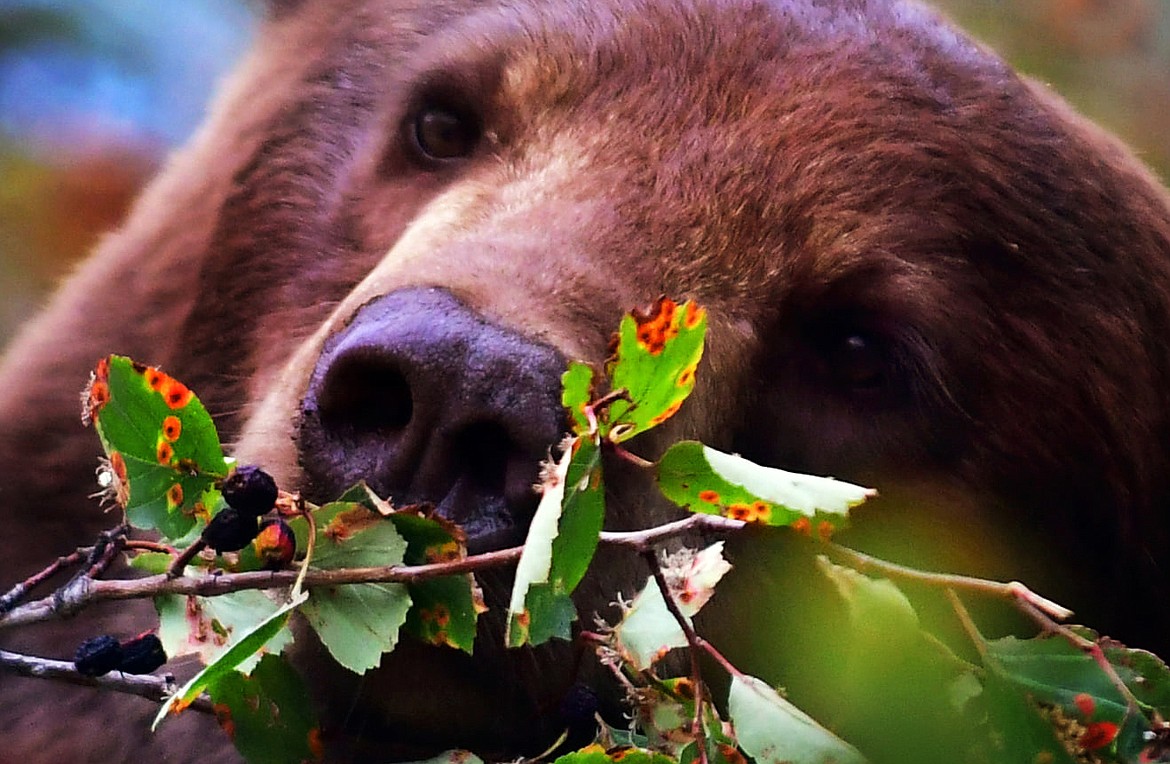Spring cleaning is also time to contain bear attractants
As spring looks like it’s finally here to stay, it’s time to get ready for another season of coexisting with the bears that call this area home. We live in the Northern Continental Divide Ecosystem, which contains the largest population of grizzly bears in the lower 48 states. Add to that a healthy black bear population, and it pays to understand how best to coexist with these animals that live in and around Bigfork.
All bears are potentially dangerous, but most bear encounters do not involve conflicts. That said, human-bear conflicts are the leading cause of mortality for grizzly bears. Management of unsecured bear attractants on private property is a key component to long-term bear conservation.
According to Montana Fish, Wildlife and Parks’ (FWP) bear management specialist Erik Wenum, there were 223 bear conflicts reported in the Bigfork and Ferndale areas in 2022. Most conflicts occurred around people’s homes and backyards, where bears can find attractants such as trash, chickens, livestock grain, dog food, orchard fruit, and more. Bears will learn to associate places with food if they receive rewards such as obtaining uncontained attractants. This learned foraging behavior can lead to the animals becoming comfortable around homes and people, potentially leading to dangerous situations.
To prevent bear conflict, it is advised to store pet and livestock feed, human food, and garbage in secured garages or sheds.
Trash should be stored in bear-resistant garbage cans, which are loaned out at no cost on an indefinite basis through Swan Valley Bear Resources (SVBR). This working group can be contacted at 406-754-3137, or located at 6887 MT Hwy 83, Condon, MT. Furthermore, SVBR provides a cost-share program for installation of electric fencing to protect any and all attractants. SVBR is happy to provide a free property consultation to help determine potential attractants and solutions to prevent conflict.
In addition to trash control, take down bird feeders in the spring and harvest all fruit trees in the fall as soon as possible, and properly dispose of unwanted fruit. Check out the Flathead Fruit Gleaning Facebook page to donate fruit to interested parties, or to connect with those interested in helping pick fruit from your trees.
The key to reducing the number of bear conflicts this season is simple: contain bear attractants around your homes and properties, and please help your friends and neighbors to do the same. The containment of attractants is recommended during the active bear season, which is generally from
March 15th through December 15th. If you have a bear getting into attractants, or bear sightings in your neighborhood, it helps to alert Erik Wenum (406-250-0062 or Erik.Wenum@mt.gov). FWP officials can help provide solutions before bears become habituated and food conditioned. It is helpful to include photos/videos if appropriate, a description of behavior, time, location, and your contact information.
Reporting conflicts early helps prevent issues from escalating. It doesn’t necessarily result in bear relocation but instead allows the bear managers to keep both the bear and neighbors safe and avoid future conflicts.
To learn more, there will be a bear awareness presentation and bear spray training event at the Bigfork VFW on June 20 th from 3-5pm. For further information, visit www.swanvalleyconnections.org/swan-valleybear-resources or call 406-754-3137.
If you’re interested in helping Bear Aware Bigfork volunteer efforts to increase efforts to promote human/bear coexistence, please send an email to BAB@svconnections.org. For more information on bear safety, visit www.fwp.mt.gov/conservation/wildlife-management/bear. Thanks for being bear aware and a good neighbor!

